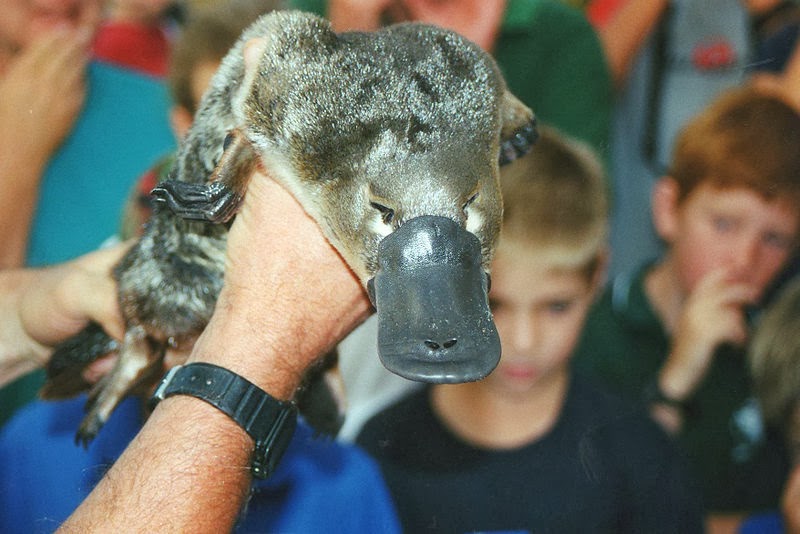Platypus Facts
Platypus Facts
1. The Platypus is one of only five known species of monotremes the other four are all types of echidna.2. Monotremes are an interesting group of animals, they are a part of the mammal family, but differentiated by laying reptile-like eggs and having only one opening for their urinary, defacatory and reproductive tracts!
3. Far from primitive - as they were once thought to be - monotremes are now widely recognised as highly evolved and fabulously specialised creatures.
4. The fact that the animal has a duck like bill, webbed feet to assist in swimming and equipped with claws for burrowing, as well as a beaver-like flat tail, was to much for the zoologists of the time to comprehend.this holds true for many people today!
5. Adults vary from 700 grams to over 2 kg and measure between 40 and 50cm, with males typically larger than females.
6. They have thick brown fur, with over 900 hairs per square mm; set in two layers, the hairs trap air and keep the platypus warm and dry.
7. Their flat tail helps them dive, but is also used to store fat.
8. While their bill is quite unusual in appearance, it serves an even more extraordinary function; highly developed elector-receptors cover the bill, allowing the platypus to efficiently search out food on murky river bottoms.
9. Platypus have no teeth as adults - they have teeth when young, but shed them before maturity - but instead have heavily keratinised pads they use to grind up their food.
10. Platypus have a fold of skin that covers their eyes and ears when they dive.
Spur
11. Males possess another interesting attribute; a sharp spur behind their hind legs which is used to inject venom. The venom is not lethal to humans - it can kill smaller animals but can inflict severe pain.12. Platypus construct two types of burrows: nesting burrows and shelter burrows.
13. Platypus are most active at night, but feeding may occur during the day and some individuals may be quite active during daylight hours.
14. Platypus are most often seen by humans swimming at the surface with only the muzzle and small part of the head above the surface.
15. Females lack defined nipples, with milk released through pores in the skin, pooling in groves on the abdomen for the young to lap up.
16. Platypus can detect very small movements of their prey using highly sensitive electro-receptors in their bill.
17. The platypus is one of only two egg laying mammals in the world.



Comments
Post a Comment